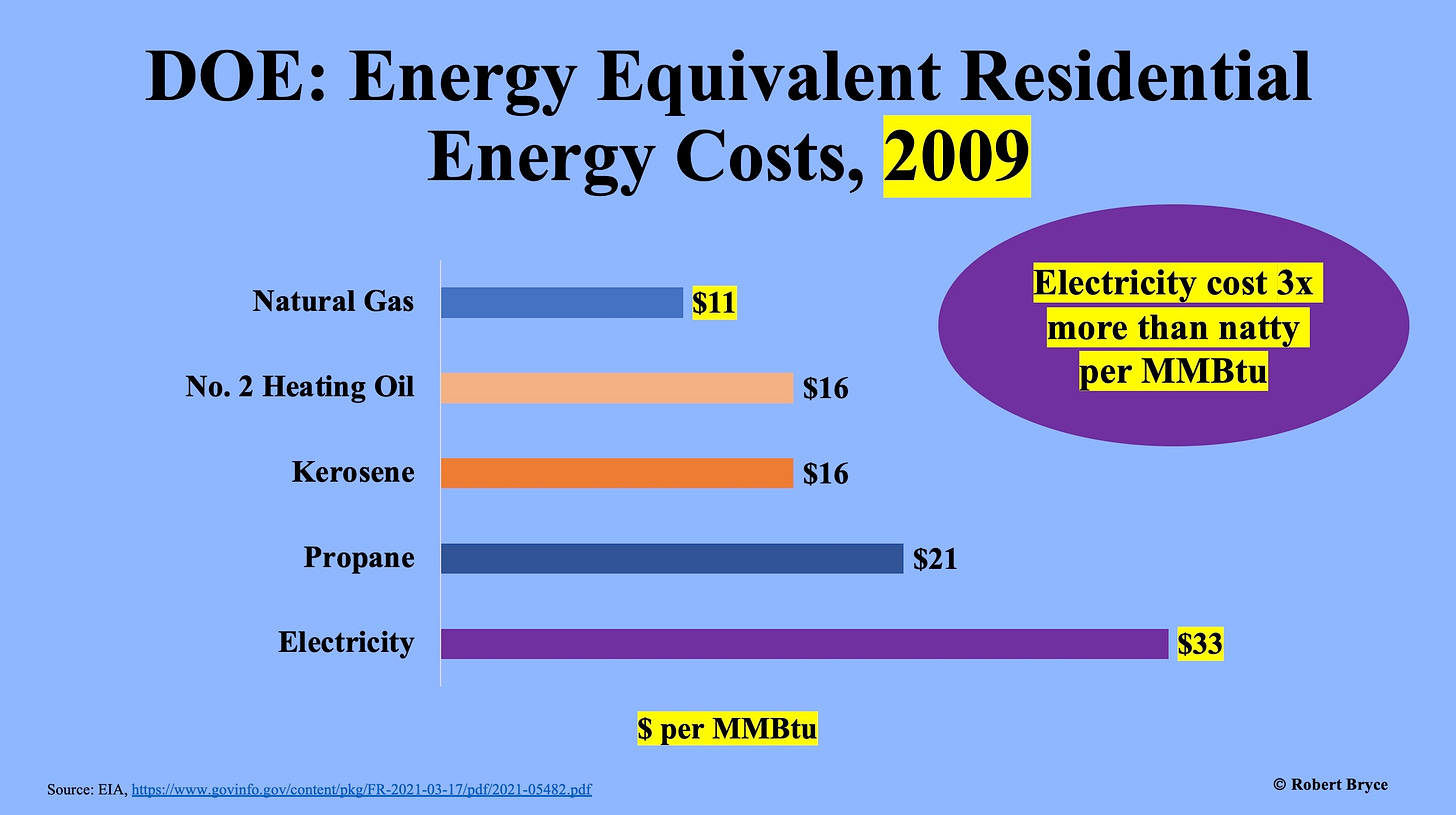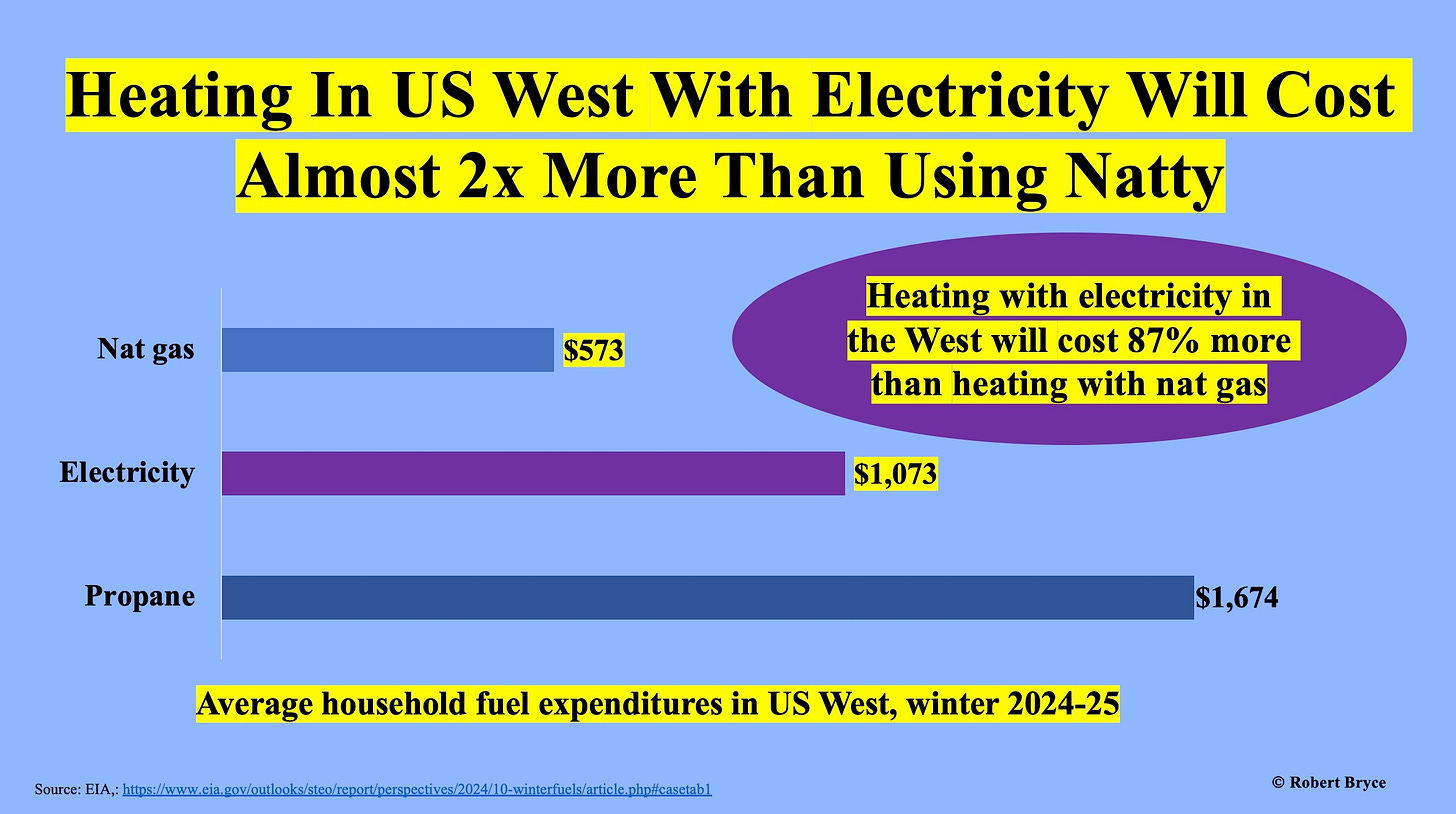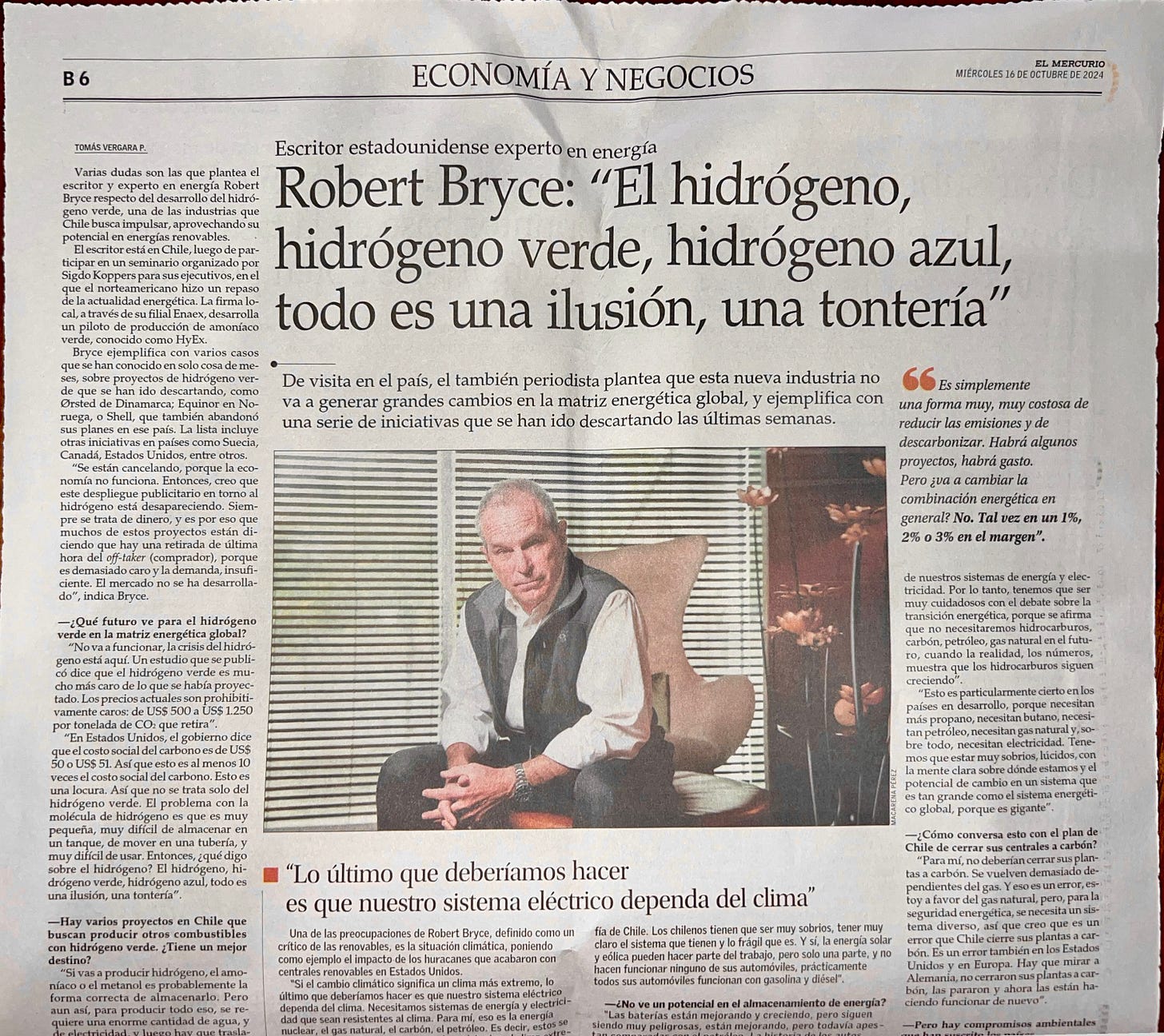Electrifying Everything Means Higher Energy Costs For Consumers. These DOE Numbers Prove It (Again)
After months of stonewalling, the agency finally published residential energy cost data. Electricity now costs 3.5 times more per Btu than natural gas.

Last year, Stacey Abrams, a prominent Democrat who served in the Georgia House of Representatives for 10 years, joined Rewiring America as a “senior counsel.” In a press release, Abrams said she was excited to join the dark money NGO because she wants to help promote its electrify everything agenda and to “share the benefits of electrification.” She also claimed that families “across the country live too close to the economic edge, and every dollar saved now changes their future. But few understand how much money they can save with a little help to upgrade their homes and vehicles.”
Abrams is one of many activists, NGOs, and politicians who contend that trying to electrify everything will save consumers money. In 2022, the White House claimed that electrifying everything would “lower energy costs.” One of the richest climate NGOs in the US, the Natural Resources Defense Council (annual revenue: $193 million), claims that “done right,” electrifying everything will “bring big benefits to environmental justice communities,” including “lower energy costs.”
Except it won’t.
The Department of Energy’s own numbers show that natural gas is far cheaper for consumers than electricity. Here are six charts that underscore the high cost (and silliness) of trying to electrify everything.
This article is free. I plan to keep some of my content available for free. I encourage you to become a paid subscriber so that articles like this don’t have to live behind a paywall.
Last Thursday, after months of stonewalling and delay, the Department of Energy’s Office of Energy Efficiency and Renewable Energy finally published the representative average unit costs for residential energy sources in the Federal Register. Those figures show, yet again, that natural gas continues to be the cheapest form of residential energy, and electricity is the most expensive. The agency determined that on an energy equivalent basis, electricity will cost consumers 3.5 times more than natural gas this year. Thursday’s publication of the residential cost data came just nine days after the Energy Information Administration released its “Winter Fuels Outlook 2024-25,” which also shows that natty is the cheapest form of energy for homeowners. (More on that in a moment.)
As seen above, the DOE says electricity will cost residential users about $47 per million Btu this year, and gas will cost about $13 per MMBtu.
Under the Energy Policy and Conservation Act of 1975, the DOE must publish the representative average costs of five residential energy sources every year. The agency usually publishes the cost figures in March or April. On two occasions, it has waited until August. Over the past two decades, it has never waited until October to publish the information, until now.
As I explained on October 3, the DOE has been delaying the publication of the figures because the agency’s staff knew the cost data would embarrass the Biden Administration and the numerous NGOs that are pushing the electrify everything agenda. I began investigating the agency’s failure to publish the residential energy cost data in early August. On August 27, Nick Montoni, the deputy chief of staff in the Office of Energy Efficiency and Renewable Energy, told me by email that the agency would publish the data on residential energy costs “ASAP.”
It took seven weeks, but the agency finally did its job. Montoni and his colleagues were stalling because electricity is far more expensive than natural gas. That reality undermines the narrative pushed by the NGO-corporate-industrial-climate-complex about the supposed benefits of electrification. Every year, the DOE’s numbers have shown that electricity costs at least three times more on an energy equivalent basis than gas. As seen above, that was true in 2023, when electricity cost 3.3 times more per MMBtu than gas.
It was also true in 2009 when electricity cost three times more than gas, and it has been true every year since.
Now, back to the “Winter Fuels Outlook,” which the EIA says is an “analysis of market conditions” for the most common residential space heating fuels. The agency forecasts prices for the US and four regions: the Northeast, Midwest, South, and West. While the agency expects US households to spend “about the same or less on energy than they did last winter,” the disparity in cost among the three primary fuels — gas, electricity, and propane — is remarkable. (The agency also projects costs for heating oil. But that fuel is primarily used in the Northeast. Therefore, I’ve omitted it in these charts.)
As seen above, the EIA expects that for the entire US, residential consumers who rely on electricity for heating will spend 75% more this winter than those who can burn natural gas in their homes.
The cost disparity is even more apparent in the West, where consumers will pay 87% more to heat their homes with electricity than they would by burning natural gas.
The punchline here is obvious: the effort to electrify everything will mean higher energy costs for the poor and the middle class. It will reduce our energy security by concentrating our reliance on a single energy network. Further, it will require putting massive new energy loads on an electric grid that’s already faltering under existing demand. In short, the NGOs, politicians, and activists who are trying to ban the direct use of natural gas are, in reality, pushing a regressive energy tax in the name of climate change that will hurt consumers and will have no impact — none — on the trajectory of global CO2 emissions or climate change.
One more point: The effort to ban natural gas in the US is akin to Saudi Arabia saying it will ban gasoline or policymakers in India, the world’s biggest banana producer, telling their people to stop eating bananas. The idea that the US — a natural gas superpower — should quit using gas is Total Bananas CrazytownTM.
The US produces more gas, by far, than any other country. And because the US produces so much of it, the fuel is super cheap, which gives American industry and American consumers a price advantage over nearly every other country on the planet. On Friday, the spot price for gas at Henry Hub, the main US trading point, was $2.25 per MMBtu. For comparison, Asian consumers who rely on LNG are now paying about six times more.
Low-cost natural gas is one reason the US economy continues to be so strong. The electrify everything effort is an execrable energy policy. Unless it is stopped, it will undermine the affordability, reliability, and resilience of our energy and power networks.
On Wednesday, I was featured in Chile’s El Mercurio
Last week, I was pleased to speak to the leadership at Sigdo Koppers, a Santiago-based mining equipment company, about alt-energy, hydrocarbons, and the demand for metals, minerals, and magnets. After that event, Lorin and I went birding in northern Chile, the Altiplano, and Lauca National Park. It was, in more than one sense of the word, breathtaking. We saw dozens of species, including three species of flamingo and the splendid Peruvian Sheartail. On Tuesday, back in Santiago, I talked with Tomás Vergara, a business reporter at El Mercurio, the oldest newspaper in Latin America and the biggest news organization in Chile. On Wednesday, the paper published Vergara’s interview.
As you can see above, we discussed hydrogen and other topics. The headline reads: “Hydrogen, green hydrogen, blue hydrogen, it’s an illusion, nonsense.” The caption immediately below the photo says, “The last thing we should do is make our electrical system dependent on the weather.” Yup.
Before you go:
As always, you can do me a favor by clicking that ♡ button. And please share and subscribe. Thanks, 1,000,000.










Excellent post, Robert.
About all the "environmental" NGO's and donkey politicians deliberately saying electrify everything will "lower energy costs!", we ask the question yet again...
Is it ignorance or is it malevolence?
I always enjoy your insights, Robert. In 1976, My folks built a relatively modest one story home on the central coast of California. My Dad was sold on the future of electrical ceiling heating over the natural gas heating we were accustomed to. Temperatures below 32 degrees F are rarely seen on the central coast but it gets chilly in the winter, especially with the winds off the ocean. The electric bill exploded upward. In the hundreds of dollars a month which was crushing for a young middle class family in the 1970s. The heating was kept off and we wore jackets from then on. It was used only in the rarest of circumstances. The electric water heater was kept on though with four teenagers so the bill remained on the high end. Electric costs in California are going much, much higher. Individual freedoms there are going to be much more constrained. My thinking on this is it will pass, with much unnecessary suffering, over the next decade or two. It feels to me to be much like the 1970s in many ways. True especially in Cali but across the larger USA as well. My bet is that 2040 will see a much more efficient and ecologically sensitive application of our energy resources. If anything, humanity will demand it and objective truths will dictate it. Just my own two cents.